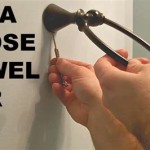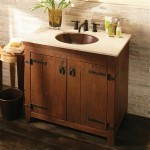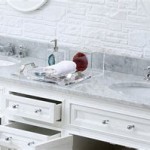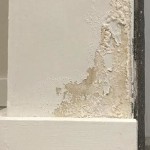How To Fix A Dripping Bathroom Faucet
A dripping bathroom faucet is a common household nuisance. Not only is the constant drip irritating, but it also wastes water and can lead to higher utility bills. Fortunately, fixing a dripping faucet is often a straightforward DIY project that can save money on plumbing costs. This article outlines the steps to diagnose and repair the most frequent causes of dripping bathroom faucets.
Before beginning any repair, it is crucial to identify the type of faucet. The three most common types are compression, cartridge, and ball faucets. Compression faucets have two separate handles for hot and cold water, characterized by separate spouts and distinct on/off control. Cartridge faucets also use two handles, but the internal mechanism uses a cartridge to control water flow. Ball faucets use a single handle that controls both temperature and flow. Knowing the faucet type is essential as it dictates the specific repair procedures.
The next step is to gather the necessary tools. These typically include a flathead screwdriver, Phillips screwdriver, adjustable wrench, pliers, and a basin wrench. It’s advisable to also have replacement parts on hand, such as O-rings, cartridges, and valve seats. A small container or towel placed under the sink will help catch any spills and protect the cabinet.
Before starting the repair, the water supply must be shut off. Locate the shut-off valves under the sink. Turn both the hot and cold water valves clockwise until they stop. Turn on the faucet to release any remaining water pressure in the lines. Once the water stops flowing, the repair process can begin.
Repairing a Compression Faucet:
For a compression faucet, first remove the decorative cap on the handle using a flathead screwdriver. Unscrew the handle using a Phillips screwdriver. Next, use an adjustable wrench to remove the packing nut. Inspect the O-rings and the valve stem for wear and tear. Replace these parts if necessary. If the valve seat is damaged, it will require replacement using a seat wrench. Reassemble the faucet in the reverse order, ensuring all parts are tightened securely.Repairing a Cartridge Faucet:
Begin by removing the decorative cap and handle screw, similar to the compression faucet. Pull the cartridge out of the faucet body. If it’s difficult to remove, use pliers or a cartridge puller tool. Inspect the O-rings on the cartridge. Replace the cartridge and O-rings with matching parts. Reassemble the faucet and test for leaks.Repairing a Ball Faucet:
Start by removing the handle screw and lifting off the handle. Next, remove the adjusting ring and cap using pliers or an adjustable wrench. Lift out the cam, cam washer, and rotating ball. Inspect the rubber seals and springs. Replace worn or damaged parts. Reassemble the faucet, making sure the parts are properly aligned.In all faucet types, the O-rings are frequent culprits of leaks. These small rubber rings create a watertight seal. Over time, they can become dry, cracked, or dislodged. Replacing O-rings is a simple and cost-effective solution that often resolves the dripping issue. Ensure the replacement O-rings are the correct size for the faucet.
Another common cause of drips is a worn-out valve seat. The valve seat controls the flow of water into the faucet. Mineral deposits can build up on the valve seat, causing it to corrode and preventing it from sealing properly. Replacing the valve seat often requires a special tool called a seat wrench. If unsure about this process, consulting a plumber is recommended.
Beyond O-rings and valve seats, the cartridge in a cartridge faucet can wear out. Replacing the cartridge is usually straightforward, involving removing the old cartridge and inserting a new one. Ensure the replacement cartridge is the correct model for the faucet. Similarly, the internal components of a ball faucet, such as the ball and cam, can also wear down, requiring replacement.
After completing the repair, turn the water supply back on slowly. Check for leaks around the faucet handles and under the sink. If the drip persists, double-check all connections and ensure all parts are properly seated. If the problem continues, further investigation or the assistance of a qualified plumber might be necessary.
Regular maintenance can help prevent future drips. Periodically inspect the faucet for any signs of wear and tear. Cleaning the aerator can prevent mineral buildup and maintain optimal water flow. Addressing minor issues promptly can prevent them from escalating into more significant problems.
While this guide provides a general overview of fixing dripping bathroom faucets, specific faucet models may have unique features or require different procedures. Consulting the manufacturer’s instructions or seeking professional help is always advisable when dealing with complex or unfamiliar plumbing issues.

How To Fix A Bathroom Faucet 14 Steps

How To Fix A Bathroom Faucet 14 Steps

Part 1 Of 2 How To Fix A Dripping Faucet

How To Fix A Leaky Faucet Guides For Every Design And Style

How To Fix A Leaking Bathtub Faucet Diy Family Handyman

Sink Faucet Repair Delta Bathroom Drips

How To Fix A Leaky Faucet The Home Depot

How To Fix A Dripping Moen Faucet Howtolou Com

Simple Ways To Fix A Leaky Delta Bathroom Sink Faucet

How To Fix A Leaking Bathroom Faucet Quit That Drip
Related Posts







